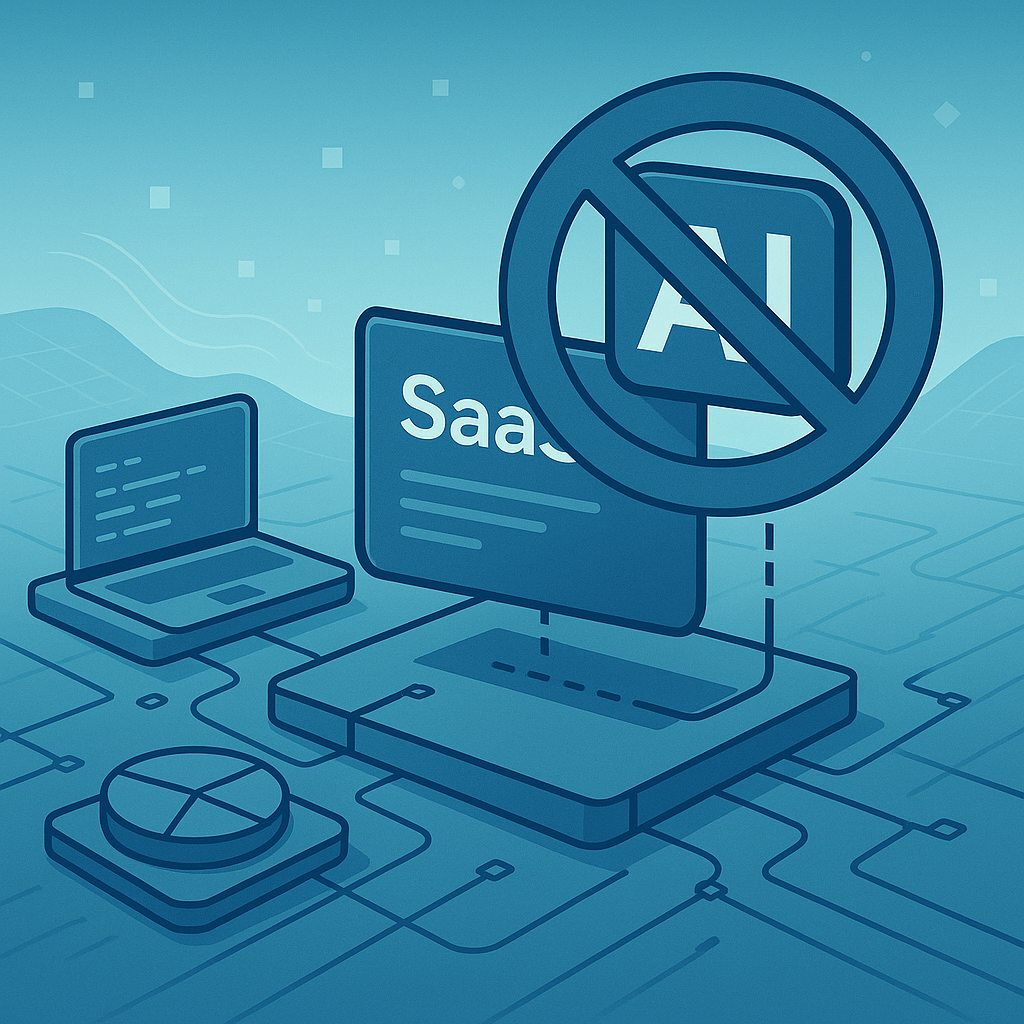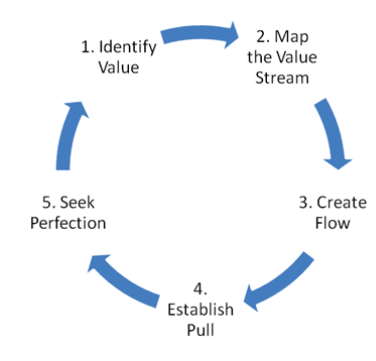If you’re running online software business or if you are developer yourself, then you have seen a lot of implementations of AI within different aspects of online services.
1You are probably using tools that are using AI yourself – currently, not utilizing such tools means that you’re probably behind others. Sometimes you could think it is not even really AI as infamous case with Builder.AI faking 700 engineers (BUT NOTE that in the end it was rerearched that they did in fact built code generation platform and failed because of financial management errors and legal pressures). We have seen examples of wrongly implemented AI in HR departments where all the candidates were refused I and we have seen examples in health industry in USA where AI was designed to deny or medical insurance applications. You could probably think of many other cases where something seems to be AI, but it’s not – or should not be used at all.
Often, when I am speaking with my potential clients, they bring up AI topic, and I understand that it is inevitable to talk about it – but in most cases AI use it is either mentioned because it’s a good topic for marketing or at or it is necessary to be implemented for funding round to be paid.
And at this point you might be wondering yourself if AI implementation or idea of the implementation is really good and necessary. So this article focuses on analyzing not only when AI use does not make any sense, but also how to possibly get rid of it.1
Identify If AI Makes Sense
Ultimate Indicator: Evidence Based Management
Since this article is mainly focused on business side of AI I wouldn’t be myself if I hadn’t mentioned evidence based management. I do believe that every business decision should be backed by some kind of evidence or assumption that experiment can lead to obtain such evidence. So for all the examples that I am describing below, one aspect of them all is true: you should verify if AI use is proper and in place by processing it against some kind of KPIs. For example for marketing use: even if AI is not used by most of your users, the usage of AI phrases in your marketing might be getting you more sales. Another example for funding rounds could be: without any kind of AI, which would fulfill the requirement of being innovative, you won’t receive funds for further development – even if ai makes no sense in the context of such product.
In other words: before removing AI functionality (or any functionality) try to assess impact on different aspects of business.
AI For Marketing Use
AI is a good selling phrase: it positions very well on Google and it sells good to people which want to explore AI use cases. In practice this means that even if your product is not AI oriented, it might be beneficial for you to keep some kind of small functionality that is AI related just to have good argument for users comparing your service with other services. To be honest, you don’t even need to have AI implemented, but you can market possibilities that can emerge from using your service in connection with external AI tools (as long as your service improves this process – for example makes it easier).
On the other hand, I would be very careful of false marketing. In this example, false marketing would be when you are showing AI aspect of your product, but in practice there is no use of AI for your product – or even worse – you are mocking AI without actually having it implemented. In such case you have two options: either you implement AI or get rid of AI marketing at all. Be honest with your users.
AI For a Funding Rounds
I do understand this aspect because of the how funding rounds are done. Sometimes venture capitals are just focused on providing funds to projects that contain most of the buzzwords. This is because buzzwords are actually selling and attracting users. Also buzzwords are often tightly connected to innovation, or resemble it. So by using buzzwords, you can get through first level of verification if business is innovative. But If you are using buzzwords just to get through this first level, then this can be a trap that will actually play against you on few levels.

First thing to consider is that at some point a reasonable funding ventures will verify the technical aspect of your project (or at least they should to do it). So if the technical aspect does not allow to achieve what you are trying to sell to VC, then you will get blocked at some point and you won’t receive the funds. You will just waste everyones time. That’s one reason to have some technical consultation before going to VC.
Second trap that you might encounter is at user level. And it is probably the worst kind of trap because it invalidates whole business. If your functionality is not really useful to users, then you won’t get a good selling results.
Other aspects are essentially some of the points I am describing in here, such as operating costs or replacement by mathematical functionalities. If your operating costs are higher than your income, then your business model will collapse. Also if your functionality can be easily replaced with most cost effective solution, then you will have lower margin on earnings and in the end some other more optimized business will take you over.
And just to be clear, I am not against using buzzwords for selling your idea to VCs or selling your product to end users, but you should only sell what actually makes sense.
AI Operating Costs
Nowadays, AI operating costs are getting lower, but still they are multiple times as expensive as running simple code functions. For some tasks though, you might need large models that are very costly – and it doesn’t matter if you are using AI API, or if you are hosting your own model by yourself, it will always be an operating cost. So if you see that your task is very repeatable, you might want to consider some kind of optimizations.
First and most obvious example I can think of is optimization of maths. It rarely makes sense to push math operations to AI. Doing such thing is slow and expensive. It is much more optimal if you have set of data that you can derive a function from. To do so, you need, of course, to have some kind of data, so be sure that you are always saving inputs of your users and outputs of AI. And this rule is not only valid for this optimization, but also others and for potential debugging.
Second aspect I can think of is a real word example I encountered: do not use LLM agents as OCR. OCRs are also AI’s but they are specialized in charter recognition. I have participated in projects where moving image recognition from LLM into dedicated OCR and then pushing text into AI for validation and fixing reduced costs by half. Of course, you could argue that AI agents can use tools, but for using proper tools AI will need some tokens that will increase cost. Another conclusion is if you have possibility to use AI specialized in given task (or even trained by you!), then it will be much more cost effective and much more efficient than using general purpose LLM.
Third example I can think of is midless integration with search – such as simple proposing related results. It does make sense to propose additional product based on what user is currently searching to upsell, crossell or simply improve user experience. And it sounds that AI usage would be perfect fit for such case because it works on “datasets that are related” and is pretty good at it. But there are at least two aspects that can dismantle this whole idea. First is randomness, which mentioned above can be adjusted, but on propositions can be counter-productive. Imagine that you are looking for “red handbag” – it is very probable that AI will propose you “yellow handbag” because it is closely related to it, but it doesn’t make sense for you to buy another bag – much more sense would be to have proposed “red hat” that would match to handbag. So you would probably need to make quite a bit of agent adjustments to make it always return really meaningful results. Secondly – why do it when you have already ready to go solutions? f you are using dedicated search engines such as Elasticsearch, you could use it natively to get related results as well – or even simple relational database such as MySQL to get another “products that were bought togheter by other buyers”.
Unused AI Functionalities
This one is actually simple and relates not only to AI functionalities, but to all functionalities that you have in your system. Rule is simple: if functionality is not being used, then get rid of it. Of course there can be multiple reasons why users are not using it: maybe because it’s too hidden or maybe because it’s not actually working or it is not providing enough value. But if such edge cases are excluded and are not improving usage, then you have code inside your application that needs to be maintained, updated and adds unnecessary complexity to your application – both code, operational and UX. So to optimize your business overall, you should probably remove it.
AI Replacement with Mathematical Function
I have mentioned this topic briefly already, but let’s dig a bit deeper into it. It does not only relate to mathematical function replacement, but any function that you can replace by procesing existing data. If you have enough data (meaning user inputs and AI outputs), and this data is not very variable – meaning that if you can obtain same results by writing sane amount of code, then you can probably replace your AI functionality with native code.
But even if it’s not possible then with enough data, you can have probably some optimizations aswell. If, for example, 80% of outputs can be done by native code, then you can save 80% of tokens by running it through code and only left over 20% through AI agent.

If none of the above is available to you, but you still have enough data, then you should absolutely consider training AI model with your existing data. This will result in some training costs, but you will be able to receive faster, more precise and better results while using smaller model. So as a final result you will pay less for better AI functionality, that is better than general use AI.
AI and Sensitive Data Processing
If your system is processing a sensitive data, then you should be very aware of it’s security, and if you are a corporate business than most probably have lawyers (and corporate standards for processing data) in your team that can analyze terms of service of cloud-based AI. At this point I will not be talking about replacing AI, but sharing some considerations about processing sensitive data that you need to think throug, even if you are using paid API, as some usage of AI API might be actually against the law.
Important aspect of terms of service and cloud itself is if data that you are sending to AI can be used for further improving models and reprocessing by AI company. Another aspect that you should consider and here is location of data processing Depending on where your business is located earned, where your users are located, different laws may apply to processing data such as GDPR.
There are few solutions, though, that you can apply even if your data processing procedures are very strict and you cannot find API that will process your data accordingly to your internal procedures. First thing that you can do is you can run AI on your internal machines. This, of course, will require quite a bit of setup and quite a bit of computing power, but it’s absolutely possible. In such case, you will have full control of your data and it will not be processed by 3rd party in any way. Second solution if your procedures are not that strict is that you can run AI on external servers that you can rent. Setup is still required but the computing power will be outsourced. Both solutions will require technical knowledge and you will be limited to AI models that are available to download, for example on HuggingFace.
AI That Was Sold To You
Of course, it should not be the case that you were sold something that you don’t need, but it just happens sometimes, either by bad will of seller or by miscommunication on both parties or by lack of knowledge. In such cases you will probably see some of the symptoms I have described in other points such as low user usage of functionality or high operating costs. But I decided to put it as a separate point to get your attention that you should always think about and discuss properly if AI functionality is actually needed.
AI That Is Not Precise Enough
AI result is by its nature an output of mathematical function. But this output can be very different for the same input. This is because AI operates on probabilities and some and have some built in some randomness. Of course you can adjust parameters of AI, such as temperature, top K, top P and so on to get more repeatable results and to reduce potential hallucinations (especially on large RAGs and on large context). But the more predictable AI output is, the more probable is that you could use static code function instead of AI.
De-AI-Fying: How to Get Rid of AI Functionalities?
De-AI-Fying Is a term I came up with myself so you probably won’t find it anywhere else – but it was needed for the sake of this article. Essentially, if you identified any of the above symptoms such as high operating costs or low user usage, you should probably think about getting rid of AI from your system. Just to conclude how to do it let’s put it in steps
- Identify the problem when AI is not being used or uses too much resources
- Identify root cause and see consider options (such as bug or wrong UX)
- Research if you have enough data to replace functionality
- Consult which method of getting rid of AI will be most effective in your case
- Implement alternative solution
- Run tests on replaced functionality on some franction of the users and compare results
- Deploy new solution systemwide
- Get rid of obsolete code
- Calculate your gains and track down new evidence
Truth is that this list can be used not only for getting rid of AI, but any other function that is not being used or is not business-optimum. Just be sure that you are using enough evidence to support the change and be compatible with EBM.
How to Not Overdo De-AI-Fy?
If you have followed steps above and carefully reviewed all the data and evidence, then you should not be in this place. But errors can happen, mistakes can be made, business environment can change – so here we are. Actually it should not be a problem to revert the changes if your software house is doing proper job on version control and handling different branches. If any code was removed from production, team should be able to revert it back by using old copies of the code. The keyword here is old code. If during the time that when functionality was not available changes to the API were made, it will probably need some updates and refinements plus adjustments to current application architecture. But if the code is not very old. then it will definitely take less time to revert changes than to write it again. So let’s take a moment and think, what could went wrong.
First thing that could be done wrong is interpretation of user behavior data. You may have interpreted that users are not using functionality because they don’t need it, while in reality users are not using it because it’s broken or too hidden in UX. Then on function removal you can get some complaints and users outflow from the system. If you are unsure why something is happening with users or why they are behaving in certain way, it might be a good idea to try to reach out to some of them most active in the system, so you can get a direct response from the user. Of course, such response can be disrupted with cognition or interpretation, but if you have few feedbacks and compare it with data you can reduce the error.
Second thing that you that could go wrong is not enough data to replicate AI functionality. This can happen especially in early stage of AI use. The method of replication of functionality I described above relies heavily on data that can be parsed (reverse engineered) into functionality. If data sample is small, then most probably your functionality will not act in some cases the same way AI did.
But it cuts both ways. Randomness that I have described above, which is a property of AI behavior, can be actually desired by the users. So if you have a lot of data and you will optimize it into functionality, that will always output the same result on same input, you may remove the actual value from the whole system. Simplest example of such case would be AI-powered chat system simulates support.
Of course, another aspect you could think of is about funding. If you will demonize AI, or any buzzwords that are appearing, and start proving that everyone else is wrong, then you might be misunderstood on your point. You might be perceived as anti-innovation and anti-improvement guy that does not really want to create anything new and is close-minded. Another thing is in such case you should consider if such VC is proper for you.
And of course, very specific case will be marketing. If you remove ai functionality, marketing team should not use AI-related keyphrases anymore, which can be a bit of trouble and may reduce user infow. Such big changes should always be discussed with marketing team or whoever is responsible for marketing. It might be the case that it is worth to keep even small fraction of AI functionality just to be able to use it in marketing without lying to users.
Verifying outcomes of De-AI-Fying
Verifying outcome will actually be dependent on what you were trying to achieve at first place, but should not be analyzed without observing other aspects. For example, you could improve user satisfaction but reduce user inflow for marketing, and it might (or might not) be an acceptable tradeoff. Of course such KPIs should be defined by you, but just to give you an idea what could be observed, here is some helpful list:
- Examined function usage by users
- Feedback from users you have interviewed
- Customer Churn Rate
- Customer Acquisition Cost (CAC)
- Click-Thruogh Rate (CTR) on ads
- Net Revenue Retention (NRR)
- Lead Velocity Rate
- Net Promoter Score (NPS)
- Daily/Monthly Active Users (DAU/MAU)
This should help you to decide if change had positive or negative impact on business.
How About Other Marketing Buzzwords?
AI is just another technology that is absolutely astonishing, but after AI we will have other technologies and we had some before – like blockchain – which suffered the same issues as those described above. Points above are actually universal to anything new in technological aspect that emerges from the market. Keep that in mind when you hear new buzzword that is not really yet tested against real word examples and if always ask yourself if what we are doing is actually useful for your users or not – and best would be if you had any evidence about it. That’s why market research before actually developing a product is crucial.
Of course, you could use buzzwords for marketing purposes to obtain new users and it is very common tactics – and it is okay in my opinion, as long as you actually provide value to your users. So use EBM, use KPIs, but keep in mind that user satisfaction is always most important aspect, as they are the ones that make your business possible.
Find Help in Removing AI Functions
If after reading this article, you are thinking to yourself that you could get rid of some AI functionalities to optimize your online business, or you have internal business tools that may use some optimization, then maybe it’s a good moment to talk with Sailing Byte about De-AI-Fying. Just contact us below, describe your problem or your system, and we will catch up on online meeting to discuss your needs.
- manual footnote ↩︎



